How to choose a good filter for water purification in an apartment?
Content:
Final filtration is necessary so that the water coming out of household taps is truly safe for both human health and all household appliances. This means that each apartment requires an additional cleaning system. What types of water filters are there for sinks and taps, what are their advantages and disadvantages? How to choose them correctly?

Determining factors
Different filters purify water from different impurities: chemical elements (chlorine, calcium, metals), bacteria, large particles... Therefore, the first thing that should be the determining factor when choosing a filter for a particular apartment is determining the composition of the water from the tap. After all, without knowing what needs to be removed, you can choose an unsuitable model that will not make the water truly safe and healthy.
To find out the exact composition, you need to submit samples of tap water to the Sanitary and Epidemiological Service for analysis. The worse its quality turns out to be, the more powerful and expensive the device will have to be purchased.
If it is not possible to perform such a study, conduct an organoleptic analysis at home to have at least an approximate idea of the composition of your water.Thus, the formation of scale in a kettle and white stains on dishes after washing indicates high water hardness: it contains a large amount of salts. A tart metallic taste indicates an excess of iron, a putrid taste indicates the presence of hydrogen sulfide. Clothes that turn gray after washing are a sign of high levels of manganese and heavy metals in the water.
What else should you look for when choosing?
- Number of residents of the apartment. This factor influences the choice of filter performance. After all, the larger the family, the more water it uses per day, month, year.
- How clean and safe should filtered water be? This is especially important, for example, in families with children, as well as for people with diseases of the kidneys, liver, gall bladder, stomach, and intestines.
- How much free space is there under or above the sink? Modern models of filter systems can differ in both large dimensions and, conversely, compactness.
- How easy is the system to maintain? Is it possible to periodically call a specialist to carry out the necessary work if independent maintenance is not implied?
- What are the acceptable material costs for such an acquisition?
Based on these factors, you should select a filter device.
Pre-filters
First of all, you should understand that the water in the apartment is used not only for drinking or cooking. Laundry, washing dishes, washing floors, and hygiene procedures do not require an ideal composition of water - minimal cleaning is enough to extend the life of household appliances and plumbing fixtures. It is important that large particles that can cause damage do not get inside the washing machine or gas water heater.
A flow-through main water filter is suitable here. This is a pre-coarse filter, or pre-filter. It cuts into the water supply main (hot or cold) and performs “rough” cleaning – from large solid impurities of organic matter and rust – mechanically. That is, it retains them using meshes, polymer disks or replaceable cartridges. At the same time, special heat-resistant prefilters are required for a hot main.
The pre-filter also lightens the load on the main filters, extending their life. It will be very useful in those houses where water from the main water supply comes with a large amount of solid impurities.
When purchasing a main filter, you need to know exactly the diameter of the pipes and the temperature of the water that will pass through it. This system is durable and does not require frequent replacement. But installing and changing the main filter most often cannot be done without calling a specialist.
Non-stationary filters
When it comes to drinking water, much higher demands are placed on its quality. Therefore, filters for it should provide deeper cleaning.
The most budget option is a filter jug. It is quite inexpensive compared to other systems, and so are the replacement cartridges for it. It's very easy to use. It takes up little space. True, such a device has very low performance, which is why it is not suitable for families of 3 or more people. In addition, the quality of cleaning depends on the structure of the cartridge itself. And it can contain a different number of filter layers that remove different substances: organic compounds, suspended solids, heavy metals, bacteria.You can read more about this on the packaging of a specific cartridge. You need to choose those that provide cleaning according to the required parameters: universal (charcoal-based), reducing hardness (with ion-exchange resins), healing (containing fluorine), removing iron, disinfecting.
Another disadvantage of jugs is the need to frequently change cartridges.
Another type of non-stationary filters is portable. They close hermetically and are convenient for travel, outdoors, or in the country.
For large families, you can use dispensers - their operating principle is identical to jugs, but they have a larger reservoir and a separate tap for pouring. And the cartridges of such devices usually have a longer life.
If the water in your tap is of very poor quality, it is better to purchase more powerful filtering equipment. Of course, it will be more expensive, but it will help you avoid consuming a lot of harmful substances.
Filter attachments
Such devices belong to flow filters. They easily attach to the faucet. Such filters purify water from small particles, rust, and chlorine. The cartridge in the filter attachment must be changed quite often: once every 1–3 months. The main sorbing element in them is activated carbon.
The productivity of filter attachments is higher than that of jugs. They are also inexpensive and easy to install and remove. However, the nozzle must be put on each time to obtain drinking water and removed if water is needed for other purposes, which is not very convenient. In addition, strong pressure in the tap can reduce the quality of filtration, and a low spout with such a nozzle is extremely inconvenient.
Desktop devices
In essence, this is the same nozzle, only slightly distanced from the mixer.The device must be placed near the sink, which means that additional space must be provided for this purpose, which is not always possible. Such a filter is connected to the mixer via a thin hose and has its own tap for supplying purified water.
Installation and operation of tabletop filters is simple, and performance is even higher than that of attachments. But the cassettes in such devices are also changed frequently, every 2–4 months, and their price is higher than that of previous models.
Filters for washing
These are quite large stationary household filters, most often multi-stage. Today they are considered the most effective, allowing you to soften hard water, purify it from various impurities, and disinfect it. But they have one common drawback: they require a lot of additional space under the sink to install the entire treatment structure, as well as install a separate tap for filtered water above the sink.
Such devices have many undeniable advantages:
- They guarantee the highest level of filtration, purifying water much better than other types of filtering devices.
- They have the highest productivity among all types.
- Equipped with a separate tap. This means that purified water will not be used for all domestic and technical needs, which allows it to be used very economically.
- There is no need to carry out any systematic manipulations (remove, screw, fill, transfer).
- Stationary filter systems are very durable, they will last for many years, provided that the cassettes are swept out in a timely manner. And this also happens much less frequently: with intervals from six months to several years.
But these devices also have obvious disadvantages:
- Quite a high cost - much higher than any other species.
- Installing such a system is a long and complex process, in most cases requiring the involvement of specialists (and this is also an expense).
- Reservoirs “eat up” almost all the space under the sink, which is not always reasonable in small apartments.
- Uneconomical: about 60–70% of water goes into the sewer during the purification process along with impurities. Although if you have financial resources, then, of course, it is better not to skimp on your own health.
There are many models of stationary appliances installed under the sink. They differ in the methods and degree of cleaning, disinfection, cartridge service life, dimensions, and price. There are 2 main types among them: flow and reverse osmosis filters.
Flow filters
Flow filters vary in cleaning method, number of stages and other characteristics.
- Coal. The principle of their operation is mechanical adsorption. The main filter material is activated carbon. Such devices are very durable, but if the water in the tap has a lot of impurities, they may not cope with the task. In addition, most of them are quite large.
- Multi-stage. Such a cleaning system consists of several (from 3 to 8) cartridges, each of which contains its own sorbent and is responsible for cleaning from certain substances. An approximate set may look like this: a cassette for mechanical cleaning, a cassette with a sorbent, a filter for removing harmful salts, a cartridge with a disinfectant filter, a block for reducing hardness, a cassette for deferrization, a column with useful minerals, a cartridge with air conditioners.There is a limitation to such filtration units: they are not practical for very hard water. As soon as the resource of the hardness softening cartridge is exhausted (and this happens quite quickly), the scale will return to the kettle.
- Softeners. These filters are designed specifically to soften hard water. Their design includes a cartridge with ion exchange resins. They retain salt ions from water that give water hardness: sulfates, chlorides, calcium salts, magnesium. During the chemical exchange reaction, sodium and hydrogen are released into the water instead.
Don’t listen to the stories of a cunning store manager that multi-stage filters provide fine or ultra-fine cleaning, because they consist of many filters of different compositions. All of these devices are classified as coarse filters (albeit of fairly high quality). Thin means only a membrane filtration system - reverse osmosis. The smaller the membrane cells, the higher the quality of the filtered water.
Reverse osmosis systems
Their fundamental difference from the previous ones is that they are not flow-through. That is, water, passing through the filtration system, is not sent directly to the tap, like with flow filters, but is collected in a special container. The fact is that the purification process in this way is quite slow, so the purified water must be collected in a reservoir so that it can be used if necessary. The disadvantages of this method include the need to select a storage tank of a suitable volume so that it accumulates as much water as will be consumed per day.
But it is the reverse osmosis method that allows you to obtain water purified to almost perfection.This cleaning removes all existing harmful impurities: rust, sand, chlorine, salts of heavy metals, sulfur, chlorine, petroleum products, viruses, bacteria.
The principle of operation of such a device is as follows: water is supplied to the filter under high pressure and hits a membrane made of a composite material, which allows only water molecules to pass through, retaining everything else. Adsorbed substances accumulate and then end up in the drain.
Naturally, such cleaning also removes beneficial mineral salts. Therefore, mineralizers are built into the reverse osmosis purification system - special cartridges filled with a backfill of mineral substances. The contents of such a cartridge gradually dissolve, enriching the water with calcium, zinc, magnesium, iron, and other important elements. One cartridge can mineralize up to 4 thousand liters.
Significant disadvantages of such installations:
- high price;
- impressive dimensions;
- high water consumption;
- lots of consumables.
In addition, all contaminants inevitably settle on the surface of the membrane, so it will have to be washed quite often.
However, recently more technologically advanced reverse osmosis filters have appeared - with ultrafiltration. Hollow fiber ultrafiltration membranes for such filters began to be produced.
Ultrafiltration has a number of undeniable advantages:
- filters are much easier to install and maintain;
- take up less space;
- are much cheaper;
- require fewer consumables;
- provide ultra-fine water purification;
- carry out disinfection (almost one hundred percent);
- regulate hardness and acidity.
It is equally important that ultrafiltration allows the beneficial mineral-salt composition to be preserved unchanged.The only significant disadvantage of such filtration systems is the need to systematically wash or change the filter membranes.
Don't give up filters in favor of bottled water. Firstly, it is not always of high quality and safe. Secondly, the use of filters most often turns out to be more cost-effective.
Criterias of choice
So, how to choose the right filter for your apartment?
Based on the number of residents and consumption volumes, the parameters are as follows:
- for 1–2 people it is quite possible to get by with a jug, especially if the water has a slight degree of contamination;
- for 3 or more residents, a tabletop system or dispenser is suitable;
- If the consumption of drinking water is high or the quality of it in the tap is very low, it is more advisable to use a system under the sink.
If you are guided by the chemical composition of impurities, then choose as follows:
- A reverse osmosis filter is an ideal option for removing all types of impurities, including increased hardness, visual turbidity, the smell of gas, oil, phenol, and the taste of salt.
- Pre-filter - needed if there are visible insoluble impurities or rust in the water.
- Cartridge with ion exchange resins - if there are impurities of chlorides, sulfates, calcium and magnesium salts.
- Filter with a carbon cartridge - for the smell of damp wood, fish, phenol, chlorine, caustic chemicals.
- Filter with iron removal cassette – if there is an iron taste.
When choosing a filter in a store, you should also pay attention to the integrity of the device and packaging, the strength of all elements, the absence of visible defects and any foreign odors.
Having purchased a filter system for your apartment, carry out its installation work as efficiently and accurately as possible.If you are not confident in your own skills, it is better to invite a professional. Saving on the quality of the purification system can result in health problems due to the systematic use of water of inadequate quality. And in order for the device to comply with safety parameters for as long as possible, do not forget to change the necessary components or wash the membranes on time.
Choosing a filter is not an easy task and sometimes quite expensive. That is why it is worth approaching this issue with all responsibility. Moreover, this choice will directly affect our health. To a greater extent, this applies to people who already have any diseases (especially kidney stones, bile ducts), as well as families with small children.
When choosing a specific filter, you need to focus, first of all, on its ability to cope with precisely those impurities that are present in the water of a particular water supply. Then the benefit from such costs will be optimal.
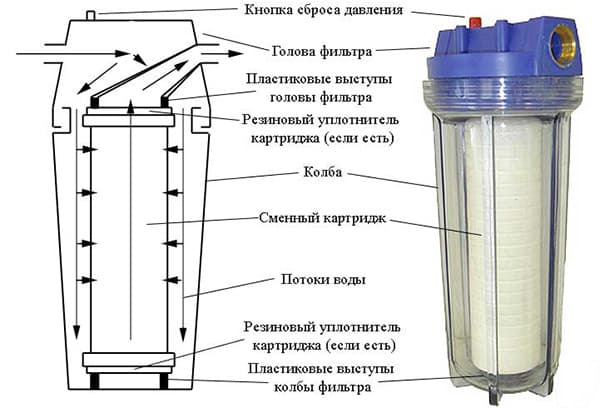
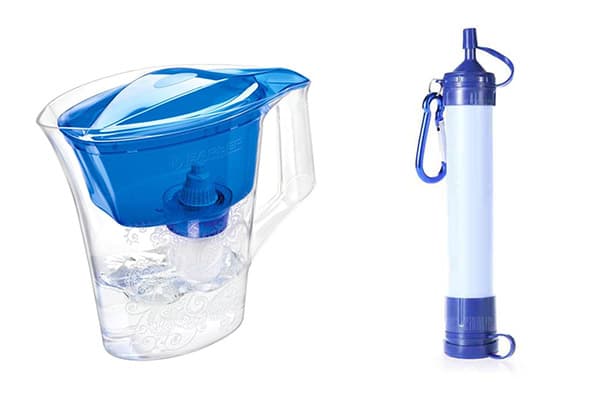
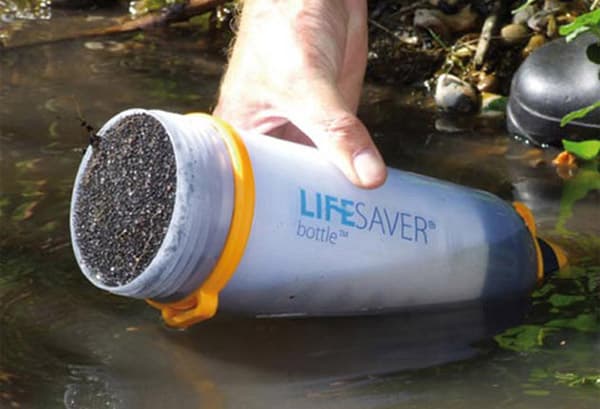
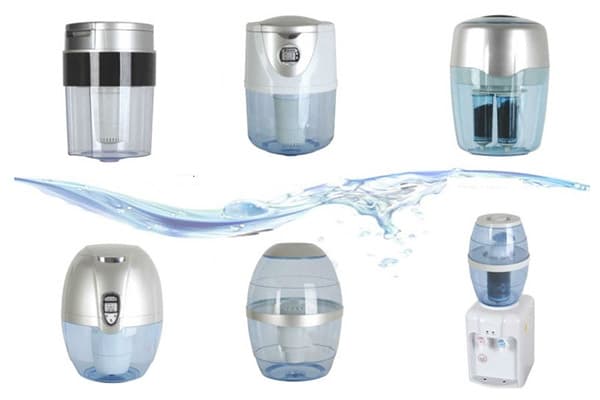
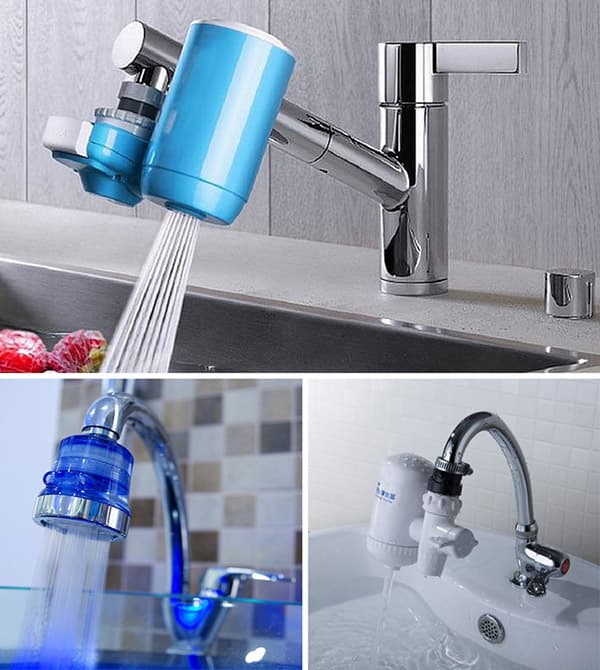
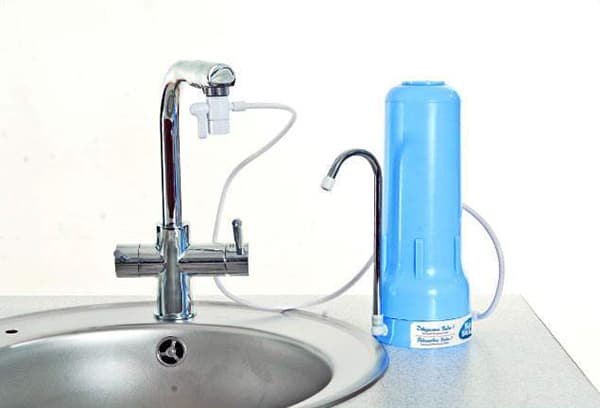
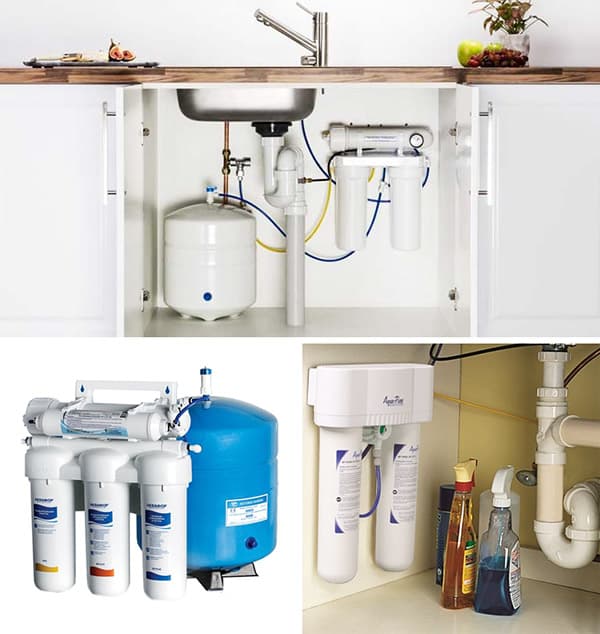
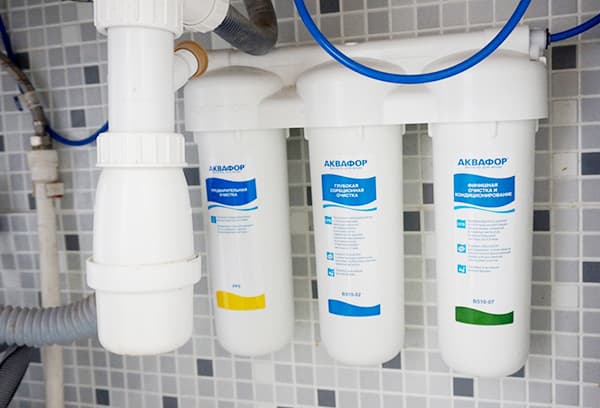
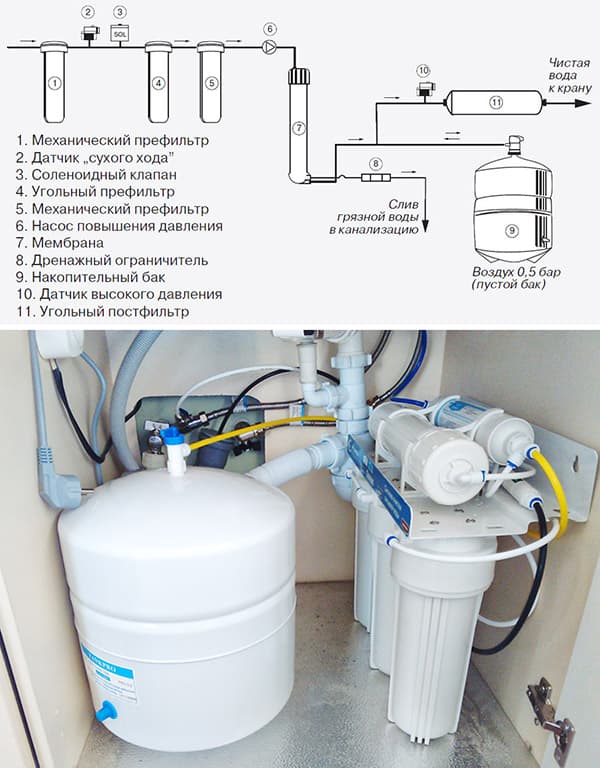
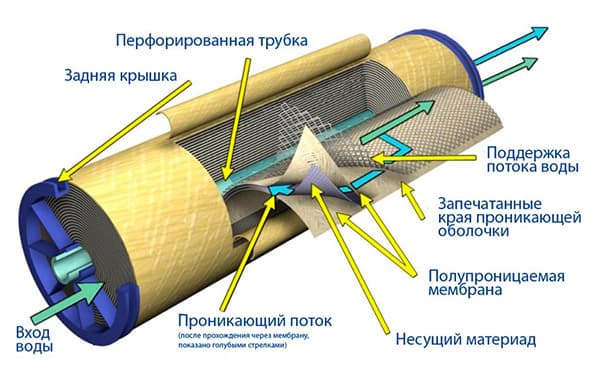

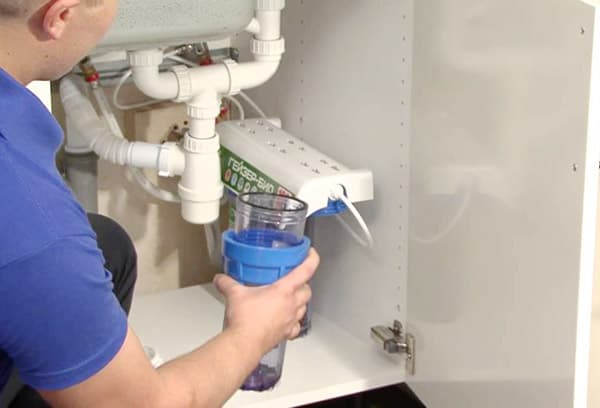
The article is written very detailed and clearly. Helped me understand water filters and make a choice. Thanks to the author.